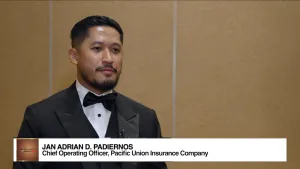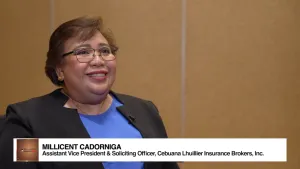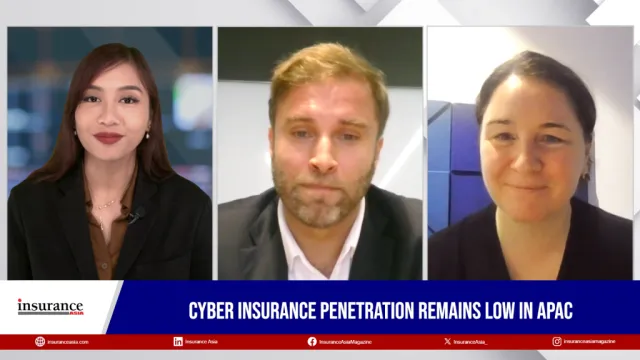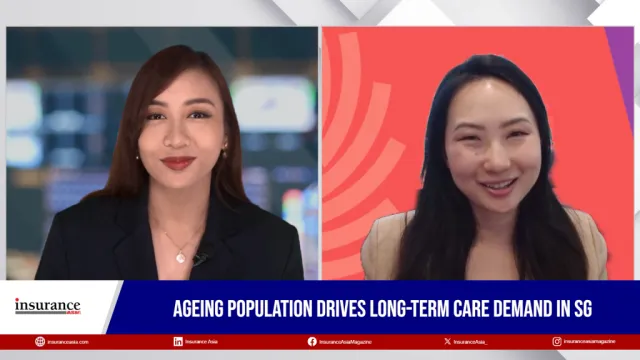Insurance’s role in the transition to a low-carbon global economy
By Diana GuzmanThere are three measures insurers can keep in mind whilst moving toward a sustainable future.
Climate change is one of the most existential problems of our time. As the world transitions towards a low-carbon economy, the insurance industry has a pivotal role to play. Building the climate resilience of our portfolios and being discerning with our climate investing assessments will help insurers deliver on their fiduciary duty, safeguard long-term investments, continue creating value for stakeholders, and foster opportunities that deliver real positive change. On the other hand, integrating climate change considerations into products and services will be pivotal to supporting societies to adapt to a changing climate.
There are three measures insurers can take towards realising a lower-carbon global economy and net zero by 2050.
Responsible investing
Insurance companies hold significant assets, with the top five biggest insurers in the world holding more than US$5t in assets. To build climate resilience and ensure our portfolios withstand a low-carbon future, insurers should integrate exclusions and divestment policies from assets that could be stranded in the transition towards a low-carbon economy, such as coal and coal-generated electricity.
It is acknowledged that irrespective of geographic location, all countries bear a shared responsibility to reach net zero in the long run. However, it is important that insurers help emerging markets and developing economies (EMDEs) transition to low-carbon alternatives gradually, accounting for the different needs and nuances within each market, rather than imposing unrealistic demands. This is especially important given that not all markets and investee companies are at the same level of maturity in the decarbonisation process. To illustrate, developed economies have the resources to invest in renewable energy, while EMDEs are still heavily reliant on fossil fuels.
Responsible investing also means raising awareness of challenges faced by EMDEs and developing workable solutions for them, while maintaining a shared ambition to achieve net zero in line with science.
Additionally, insurers need to assume responsibility for spotting greenwashing practices of underlying assets and avoid misrepresentation of their own green credentials. In the absence of a unified industry framework, insurers can use greenwashing regulations in developed markets as a benchmark for their own activities to promote interoperability for green standards. Meanwhile, industrialising economies are well positioned to lead the development of “transition” frameworks given these issues are uniquely faced by the region.
Industry engagement and advocacy
Global insurers are closely integrated in the local economies where they operate. We understand local challenges and nuances while also having access to global best practices and perspectives. Thus, it gives us the opportunity to lead the conversation and contribute to the direction of policy, regulation, and advocacy. We can provide regulators with guidance and support on customised policy solutions for each market. For example, green bond instruments might be similar across markets, but to accelerate local adaptation, policies need to address specific local challenges.
Engaging with policymakers and other stakeholders in climate risk and transition investment-related initiatives could develop new regulations to accelerate the energy transition, including national transition pathways. Another area where insurers can focus is to encourage more disclosure regulations for more reliable data to allow thorough assessments of risks and opportunities, which also drives more effective engagement strategies with investee companies.
In addition, EMDEs require collaboration on policy engagement and help mobilising capital across private and public partners locally and globally to meet their net zero goals. The insurance industry can lead and facilitate that collaboration, in adaptation of policies, providing investable instruments, and exchanging thought leadership.
Innovating climate-related products and solutions
One of the biggest barriers to the low-carbon transition is the financing gap. The International Energy Agency estimates that EMDEs need close to US$3t in annual investment by 2030 to reach their 2050 net zero goals, with the private sector needing to supply about 80% of the required investment. Financial companies can help to address the financing gap by playing complementary roles in providing a mix of capital with different characteristics, such as time horizon, risk profile or currency mix.
Though awareness of climate risk is increasing, recent research by the World Economic Forum and Ipsos found that the number of consumers adopting green habits is falling. One way to mitigate this effect is to offer products that incorporate investment in green bonds, transition financing (finance raised/deployed to implement net-zero transition) and adaptation financing (to help communities reduce the risks they face from climate hazards) alongside protection products for consumers.
In designing relevant protection products, it is important to understand the effects of climate change on people’s health. There is strong evidence for the impacts of climate change on the transmission and future spread of malaria and dengue, two of the most globally significant vector-borne diseases. This disease is a common cause of hospitalisation in endemic areas of tropical countries, along with increased medical costs associated with treatment facilities and household purchases of over-the-counter medication. As such, insurers are offering affordable products that protect against such infectious diseases.
Conclusion
It is critical for the insurance industry to respond to the challenge of transitioning towards a low-carbon economy. It should be carried out in a way that reflects geographical and sectoral challenges, in addition to considering the social implications of such plans. Change needs to start locally and we are in a unique position to combine global expertise with local awareness to advise and engage with various policymakers and stakeholders.
As challenges related to climate change evolve, approaches must also evolve. Insurers are moving away from a pure compliance and risk management approach, to one that is driven by sustainability and impact, in order to drive both societal and business value. The key is to focus energy and resources in areas where insurers can have the most material and real-world impact.
Lastly, insurers must work together with like-minded players through advocacy, dialogue, and collaboration, to develop a robust green financial ecosystem and a strong regulatory framework. Through a combination of these measures, the insurance industry can play a pivotal role in the journey towards a low-carbon economy and net zero by 2050.
Top 100 Largest Insurance Rankings by Total Assets | Sovereign Wealth Fund Institute




















 Advertise
Advertise






